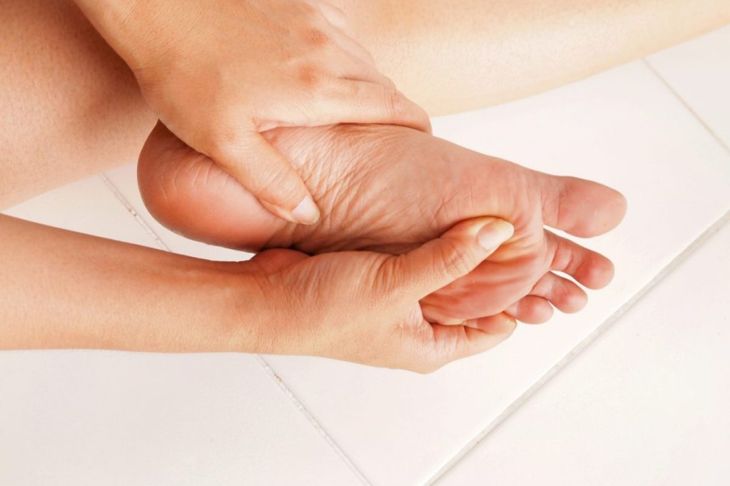Many people with diabetes experience foot aches and pains. Naturally, there is some concern about what precisely the foot pain means, what is causing it and if it is dangerous. Up to 50% of people with diabetes experience nerve pain in some form. Additionally, failure to control blood sugar levels almost always causes the pain to worsen and even lead to permanent damage.
Mononeuropathy
One of the less severe causes of foot pain is mononeuropathy or focal neuropathy. Sustained high blood sugar levels can damage the body’s nerves, causing many problems. Mononeuropathy’s name comes from the fact that it affects a single nerve. It often appears suddenly and causes severe pain. Generally, mononeuropathy doesn’t cause any long-term issues and will fade on its own. However, this can take anywhere between a few weeks to several months.
Peripheral Neuropathy
For most cases of foot pain stemming from diabetes, it is the result of peripheral neuropathy. Like mononeuropathy, peripheral neuropathy stems from nerve damage. It typically affects the feet and legs first before moving to the arms and hands. However, it affects each person differently. For most people, sharp pains and cramps are common, as are tingling or burning sensations. Some people find that gentle touch causes as much pain as firm pressure on the foot. Damaged nerves eventually lead to other complications, making peripheral neuropathy more severe than mononeuropathy.
Circulation Problems
In addition to peripheral neuropathy, consistently high blood sugar levels can cause circulation problems as they damage the arteries, capillaries, and veins. Diabetes typically affects the arteries in the legs, particularly in the knees and calves. Because this cuts off blood flow to the feet, the tissues become starved for oxygen, which is often extremely painful. Some people with diabetes describe the pain as their feet being “strangled.” As the flow of blood slows, the veins in the feet become swollen and painful to the touch. Eventually, the veins may even cause ulcers that lead to infections.
Infections
People with diabetes are significantly more susceptible to infections because of the medical and nutritional changes their bodies are experiencing. Bacterial infections usually develop on feet that have ulcers, irritation, or injury. Because many individuals with diabetes have peripheral neuropathy, it is typical for them not to realize they have an injury or ulceration on their feet. Bacterial infections may begin on the skin as cellulitis before spreading to the bone. Even when a person with diabetes complains of foot numbness, they will often still feel the pain of an infection.
Gangrene
A combination of poor blood circulation and peripheral neuropathy can lead to gangrene, a condition that occurs when body tissue dies. Usually, this is the result of reduced blood flow, an infection, or an injury. People with diabetes have a much higher risk of developing gangrene. As the infection worsens and tissues die, gangrene can become a life-threatening condition. Any sign of tissue death requires immediate medical attention. Signs of gangrene include purple, green, or black skin, severe pain, foul smell, and skin lesions.
Charcot’s Foot
One of the rarer complications of nerve damage in people with diabetes is Charcot’s foot. This condition begins as redness, warmth, or swelling of the feet. However, because neuropathy blocks any feeling in the feet, it is easy for the feet and toes to shift or break. This changes the shape of the feet and is extremely painful, even with neuropathy numbing the area.
When to See a Doctor
There are several signs that any person with diabetes should be on the lookout for. These signs include:
- Changes in skin color
- Temperature changes in the feet
- Ingrown toenails
- Dry or cracked skin on the heels
- Fungal infections such as athlete’s foot
- Foot swelling
- Extreme and constant pain in the feet
Foot Care
To prevent foot pain and other foot issues, individuals with diabetes should perform some foot care steps to keep their feet healthy. Staying vigilant about foot health could be life-saving. Checking the feet daily will ensure that there are no signs of infection or injury. Additionally, thoroughly cleaning the feet will prevent infections from developing. Supportive socks, shoes and other footwear can protect the feet and prevent any deformities.
Checking the Feet
It can be difficult for people with diabetes to check their feet properly, for a variety of reasons. Some doctors recommend placing a mirror face-up on the floor and simply lifting a foot over it. Doing so will provide a clear picture of the sole and heel without requiring any painful bending or contorting. When checking their feet, people with diabetes should look for minor blisters, cuts, skin cracks, ingrown toenails, or any way bacteria can enter the body.
Prevention
If foot pain is a consistent problem, there are some strategies that people with diabetes can use to help. Primarily, controlling blood pressure and blood sugar levels will prevent the majority of the issues that lead to foot pain. Those who smoke should consider quitting, as smoking interferes with blood circulation. As well, staying active via walking or running is a great way to improve blood flow. For those who are overweight, even slightly, losing weight can help improve blood sugar, blood pressure, and reduce the amount of stress on the feet.

 Home
Home Health
Health Diet & Nutrition
Diet & Nutrition Living Well
Living Well More
More




















